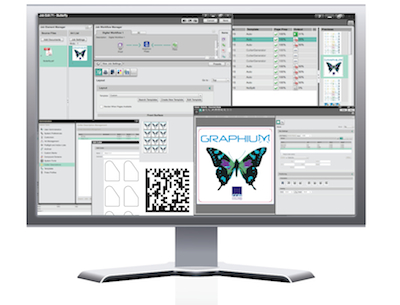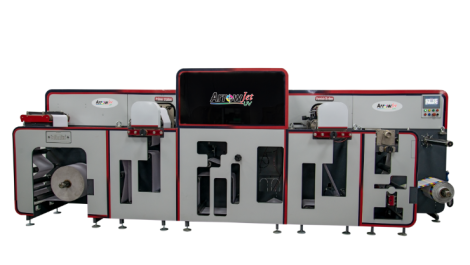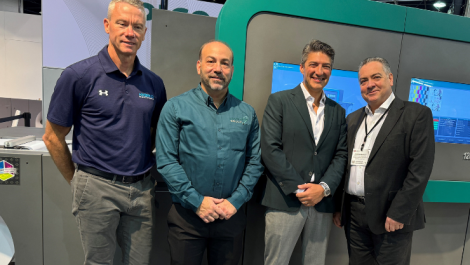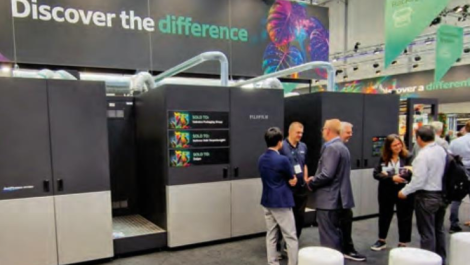FFEI has launched the Graphium Label Production Workflow for its Graphium hybrid digital inkjet label press to increase the machine’s productivity.
The software is a fully automated pre-press system, requiring minimal manual intervention to transform complex digital files into finished fit-for-purpose labels. In doing so it ensures converting production waste and pre-press production touch points are kept to a minimum. Whilst at the same time improving accuracy and repeatability.
Andy Cook, managing director, commented, ‘We developed Graphium Label Production Workflow, to address a vital but as yet unmet need to efficiently manage label production.” Cook continued, “Our customers helped us define workflow tools that can dramatically increase the benefits of a hybrid system and take productivity way beyond anything available today. The result is that Graphium Workflow provides pre-press operators with an intuitive, end-to-end means to digitally control the setup of files in the most cost efficient manner – regardless of whether that is just simply inkjet or inkjet, flexo and finishing.’
The workflow enables a single job to be split across multiple output devices with tight centralised colour management and touch free automation. It allows colour using ISO standards to be implemented across flexo and digital.
The software’s multichannel processing also enables spot colours, text, graphics, and barcodes to be processed efficiently. This means it can process images and graphics to ISO standards, create spot colours utilising the full Graphium gamut.
The company has also made several enhancements for the Graphium press itself. The number of different label jobs that can be converted per shift on the unit exceeds that of a flexo or a digital press with near/off line finishing. New print engine software dramatically boosts print speeds, which means it can now print premium, five colour labels at over 45 m/min. This combined with the Graphium’s flexibility to operate in hybrid or purely digital, means label converters have the choice to run each job in the quickest, most cost effective way.
The introduction of a new camera for auto registration will also boost productivity, by significantly reducing the time needed to check and correct registration for different medias.
By doing so the new auto registration system will reduce substrate wastage.
Operators will also have the ability to set the press into a ‘cold standby’ mode. The new mode allows a quick machine start up time and also reduces power consumption and ink wastage.
The new camera, increased speed and a host of ergonomic features will all be available as a free upgrade to existing customers.






